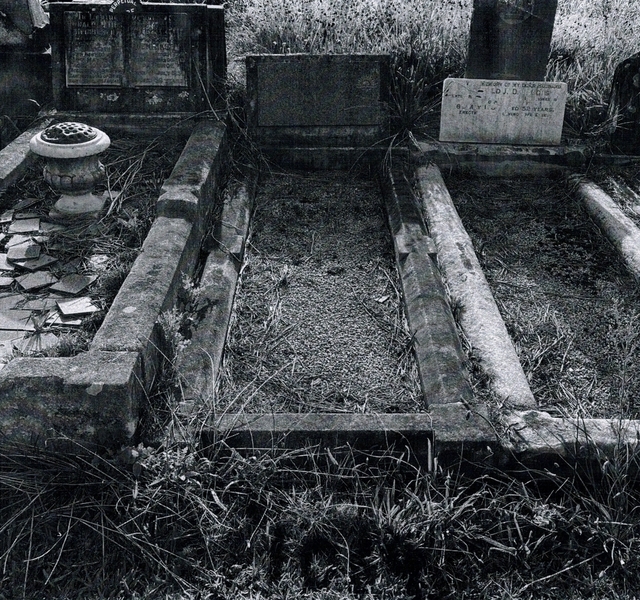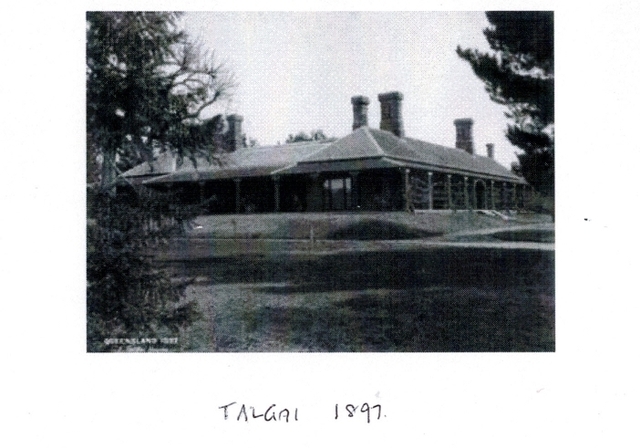Talgai Homestead, situated near the small town of Allora, has a unique and varied history since its construction in 1868 by pastoralist, George Edwin Carr Clark.
It was 150 square meters of sandstone which still stands today and has been-heritage listed since 1992, and has become a tourist attraction.
Talgai was designed by noted architect R.G.Suter, and on completion, became the family home of George and Maria Carr Clark.
George and his brother Charles split the large property in 1868, with Charles taking the west and George the east. They soon developed it into one of the most successful pastoral estates in the Southern Downs.
This story is not so much about the homestead but of the birthplace of the family’s four military heroes born there, two from World War I and two from World War II. Over the next few weeks their stories will be written as a tribute to these brave men who are now part of the Anzac legend.
The first was Mortimer Carr Clark, the eldest son of George and Maria Clark who was born at Talgai on 31 December 1891 at East Talgai, Hendon, a few kilometers from Allora.
Mort, as he liked to be known, was educated in the region and was a farm hand on the vast Talgai property prior to World War I.
Like many young men of the region, Mort served in the local militia before moving to Sydney where he enlisted into the 4th Battalion, G Company at Randwick, Sydney, as a Private, on 3 September 1914 at the age of 22 years.
After a short period of training Mort embarked from Sydney with his unit on board the transport A14 Euripides on 20 October 1914, bound for Alexandria then on to join the Mediterranean Force, Gallipoli, landing on the beach at Anzac Cove on 25 April 1915.
Mort landed under a barrage of mortar and small arms fire from the beach slopes and was twice wounded on 9 May, and again on 6 August. He spent time in the Convalescent Hospital at Zeitoun and later, suffered a more serious wound that required him to be transferred on HMS Dunluce Castle to Malta and later to King George Hospital, London.
After recovery he returned to his unit now at Tel el Kebir in Egypt on 29 December 1915, and was transferred to the 56th Battalion on 16 February 1916.
Mort was rapidly promoted to Sergeant and taken on strength with the 5th Divisional Ammunition Column on 4 May 1916 when he embarked to Alexandria to join the British Expeditionary Force on 18 June, and disembarked at Marseilles, France.
It was here that Mort’s good leadership came under notice which saw him seconded to the Cadet Royal Artillery School, St John’s Wood in London, where he completed an officer’s course that now saw him emerge as a 2nd. Lieutenant on 1 August 1917.
After a period of leave in England, Mort returned to action and began to once again come under notice by his Commanders, for his competence and bravery in the battles at Nonne Boschen, east of Ypres. It was here that Mort was awarded the Military Cross for his action there. This is why he was recommended for this prestigious award.
“During the period 29th. September 1917 to 12th. November 1917, this Officer served with his Battery which was in position at Nonne Boschen east of Ypres. The Battery position was practically devoid of cover, and subject to heavy shelling which inflicted a number of casualties among the personnel of the Battery. This officer, throughout the period, moved fearlessly through his Battery, which inspired his detachments with confidence thereby setting a fine example by his conduct.
“On 4 October 1917, he acted as F.O.O. for his Group in the attack on Broodseinde Ridge followed immediately behind the advancing infantry. On reaching the crest, he established a station which enabled his group to engage in fleeting opportunities and engage in dispersing large parties of the enemy which were assembling for a counter-attack”.
Mort was also mentioned in dispatches in the 5th Division
Artillery Headquarters, Routine Order No 88, 30 October 1917, when it stated: “The Army Corps commander wishes to express his appreciation of the gallant services rendered by Lt. M.C. Clark”.
Mort was given a well-earned rest from the Front when he was granted a period of leave before returning to Australia from Devonport on board HT Kildonian Castle, and disembarked in Brisbane on 12 May 1919 and his appointment was terminated on 27 May 1919.
In 1923, Mort married Melody McIlwraith McMaster and they had two sons. He eventually purchased a property called Maharba, near Dalveen, and stayed there for several years before moving to the Goondawindi district at a new purchase named Nymboyda, situated near Boggabilla.
He was a keen pastoralist and was very popular in the district until ill health forced him to move to Sydney in 1934 when he sadly passed away. He was only 42 years of age, so it was a shock to the family, and it was possibly as a result of his brave war service in World War I.
As far as research goes Mortimer Carr Clark never returned to Talgai the place of his birth, but he will be forever remembered for his gallant war service which awarded him the Military Cross. He now lies buried in Sydney’s Rookwood Cemetery in a sadly neglected grave which is not unexpected considering it is 90 years since his passing.








